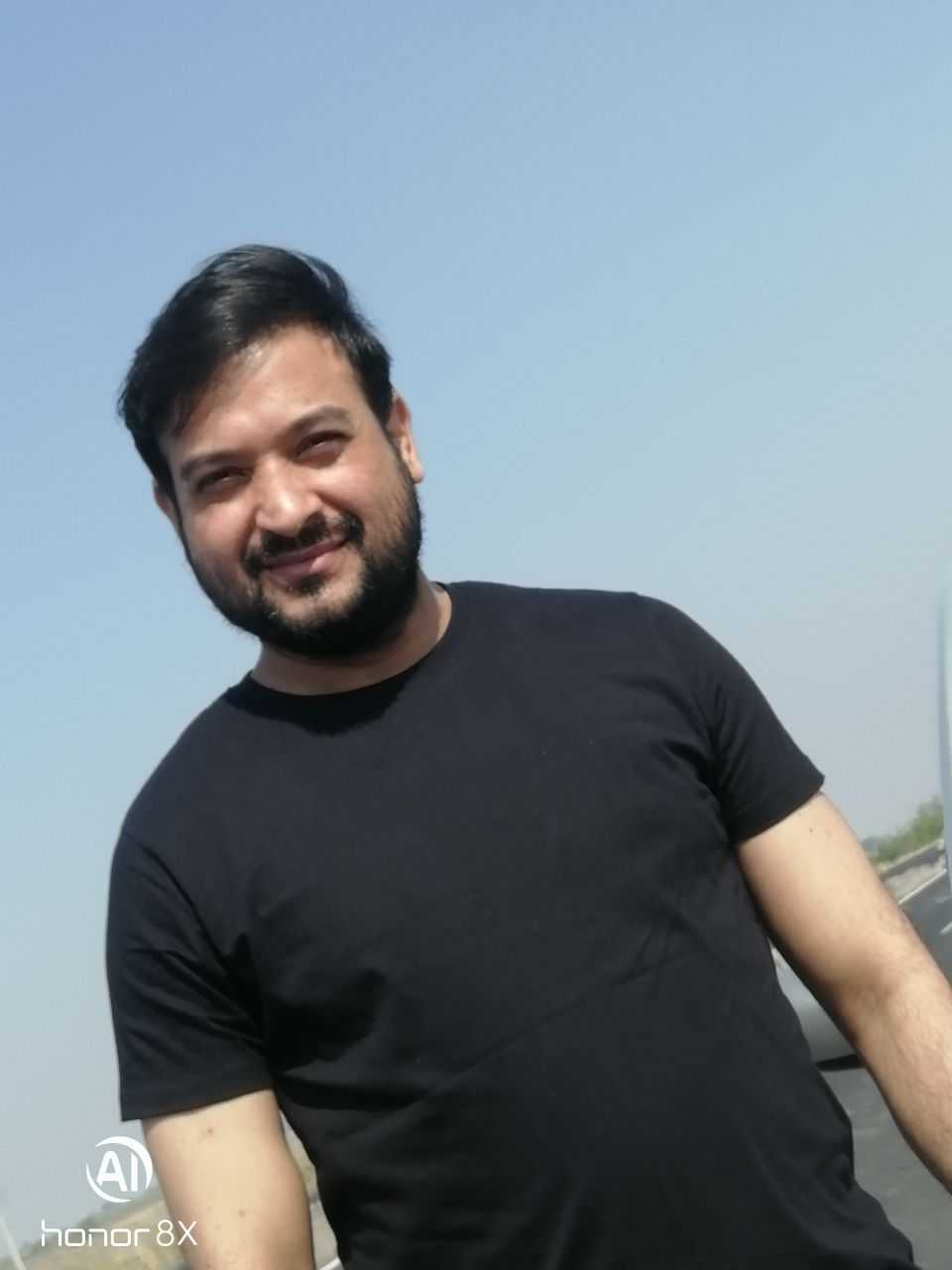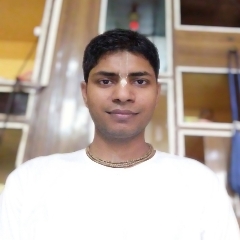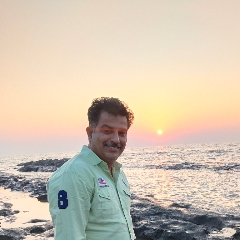Question 1 :
Keplers second law regarding constancy of aerial velocity of a planet is a consequence of the law of conservation of:<br/>
Question 3 :
If the area swept by the line joining the sun and the earth from Feb 1 to Feb 7 is A, then the area swept by the radius vector from Feb 8 to Feb 28 is<br>
Question 4 :
Planets rotate around the Sun in a path best described as <br/>
Question 5 :
If earth revolves around the sun in an orbit of double its present radius, then the year on earth will be of
Question 6 :
<span>The Jupiter's period of revolution around the Sun is $12$ times that of the Earth. </span>Assuming the planetary orbits to be circular, find the velocity of Jupiter in the heliocentric reference frame.
Question 7 :
For a planet revolving around sun, if $a$ and $b$ are the respective semi-major and semi-minor axes, then the square of its time period is proportional to<br>
Question 8 :
A planet in an orbit sweeps out an angle of ${!60}^{o}$ from March-May. When it is at an average distance of $140$ million km from sun. If planet sweeps out an angle of ${10}^{o}$ from October-December, then the average distance from sun is ____
Question 9 :
<span>The Jupiter's period of revolution around the Sun is $12$ times that of the Earth. </span>Assuming the planetary orbits to be circular, find the acceleration of Jupiter in the heliocentric reference frame.
Question 10 :
The minimum and maximum distance of a satellite from the centre of the earth $2R$ and $4R$ respectively, where $R$ is the radius of the earth.<div>The radius of curvature at the point of minimum distance is:</div>
Question 11 :
A gun fires a bullet of mass 50 g with a velocity of 30 m s$^{-1}$. Because of this gun is pushed back with a velocity of 1 m s$^{-1}$. Mass of the gun is :<br>
Question 12 :
A ball on a frictionless ground is moving towards a boy. When it reaches the boy, he kicks the ball. After the kick, will the momentum of the ball be conserved?<br>
Question 13 :
A body is projected vertically upwards. Its momentum is gradually decreasing. In this<br>
Question 14 :
Which of the following is true about the angular momentum of a cylinder down a slope without slipping?
Question 15 :
A thin metal disc of radius $25\ cm$ and mass $2\ kg$ starts from rest and rolls down on an inclined plane. If its rotational kinetic energy is $8\ J$ at the foot of the inclined plane, then the linear velocity of centre of mass of disc is :<br>
Question 16 :
When the following bodies having same radius starts rolling down on same inclined plane, identify the increasing order of their accelerations:<br/>I) Hollow cylinder <br/>II) Solid cylinder<br/>III) Solid sphere <br/>IV) Hollow sphere<br/>
Question 17 :
A particle of charge $Q$ and mass $m$ travels through a potential difference $V$ from rest. The final momentum of the particle is:
Question 18 :
A uniform thin ring of mass $0.4$ kg rolls without slipping on a horizontal surface with a linear velocity of $10$ cm/s. The kinetic energy of the ring is?
Question 19 :
STATEMENT-1<br/>Two cylinders, one hollow (metal) and the other solid (wood) with the same mass and identical dimensions are simultaneously allowed to roll without slipping down an inclined plane from the same height. The hollow cylinder will <span>reach the bottom of the inclined plane first.<br/>STATEMENT-2<br/>By the principle of conservation of energy, the total kinetic energies of both the cylinders are identical when they reach the bottom of the incline.</span>
Question 20 :
A disc rolls down a plane of length L and inclined at angle $ \theta $ without slipping, its velocity on reaching the bottom will be:-
Question 21 :
A machine gun fires 360 bullets per minute. Each bullet moves with a velocity of 600 ms$^{-1}$. If the power of the gun is 5.4 kw, the mass of each bullet is,
Question 22 :
Calculate the work done in lifting  water of 200 kg through a vertical distance of 6 m. $\left ( g=10  m  s^{-2} \right )$<br/>
Question 23 :
A body is dropped from a certain height from the ground. When it is halfway down, it possess,
Question 24 :
A body of mass $1kg$ falls from a height of $5m$. How much energy does it possess at any instant? (Consider $g=10ms^{-2}$)
Question 25 :
An object is acted on by a retarding force of $10 N$ and at a particular instant its kinetic energy is $6 J$. The object will come to rest after it has travelled a distance of:
Question 26 :
The decrease in the potential energy of a ball of mass $ 20 kg $ which falls from a height of $ 50 cm $ is
Question 27 :
A rope ladder with a length $l\ $ metres carrying a man with a mass $m$ at its end is attached to the basket of a balloon with a mass $M$. The entire system is in equilibrium in the air. As the man climbs up the ladder into the balloon, the balloon descends by a height h. In this case, the potential energy of the balloon:
Question 28 :
A man raises a box of mass $50 \ kg$ to a height of $2 \ m$ in $2 \ minutes$, while another man raises the same box to the same height in $5 \ minutes$. What is the ratio of work done by them ?
Question 29 :
An area of land is an average of $2\ m$ below sea level. To prevent flooding, pumps are used to lift rainwater up to sea level. What is the minimum pump output power required to deal with $1.3 \times 10^9\ Kg$ of rain per day?
Question 30 :
If water is flowing in a pipe at a height 4m from the ground then its potential<br>energy per unit volume is (Reference is taken at ground, $ g=10 \mathrm{m} / \mathrm{s}^{2} ) $<br><br>
Question 32 :
Compared to a burn due to water at 100$^o$C, a burn due to steam at 100$^o$C is
Question 34 :
The snow on the mountain does not melt all at once when it is heated by the sun because it
Question 35 :
Two rods having thermal conductivities in the ratio of 5:3 and having equal length length and equal cross-section are joined by face to face. If the temperature of free end of first rod is $100^oC$ and temperature of free end of second rod is $20^oc$, then temperature of the junction, is-
Question 36 :
A test tube containing some water is surrounded by melting ice (pure). Then, the water in the test tube will
Question 37 :
$0.1\,{m^3}$ of water at $80^\circ C$ is mixed with $0.3\,{m^3}$ of water at $60^\circ C$. The final temperature of the mixture is :
Question 39 :
Three rods $A,B$ and $C$ have the same dimensions. Their thermal conductivities $k_A, \space k_B$ and $k_C$ respectively. $A$ and $B$ are placed end to end, with the free ends kept at a certain temperature difference. $C$ is placed separately with its ends kept at same temperature difference. The two arrangements conduct heat at the same rate $k_C$ equal to<br>
Question 40 :
A black body is at $(727)^{0}C$. It emits energy at a rate which is proportional to:<br/>
Question 44 :
According to Hooke's Law, the elongation produced in a body is :
Question 45 :
The energy stored per unit volume in copper wire, which produces longitudinal strain of $0.1$% is: $\left( Y=1.1\times { 10 }^{ 11 }{ N }/{ { m }^{ 2 } } \right) $
Question 46 :
$10^{22}$ particle each of mass $10^{-26}Kg$ are striking perpendicularly on a wall of area $1m^2$ with speed $10^4m/s$ in $1sec$. The pressure on the wall if collisions are perfectly elastic is:
Question 48 :
A tungsten wire of length 20 cm is stretched by 0.1 cm. Find the strain on the wire.
Question 49 :
A steel wire of length 1.5 m and area of cross section $1.5$, is stretched by $1.5$. Then the work done per unit volume is  ?  $\left( Y=2\times { 10 }^{ 11 }N{ m }^{ -2 } \right) $
Question 50 :
What will be the stress at $- 20 ^ { \circ } \mathrm { C } ,$ if a steel rod with a cross-sectional area of $150\mathrm { mm } ^ { 2 }$ is stretched between two fixed point ? The tensile load at $20 ^ { \circ } \mathrm { C }$ is $5000$ <br>$N :$ (Assume $\alpha = 11.7 \times 10 ^ { - 6 } / ^ { \circ } \mathrm { C }$ and $Y = 200 \times 10 ^ { 11 } \mathrm { N } / \mathrm { m } ^ { 2 } )$
Question 52 :
If there were no atmosphere, the average temperature on earth surface would be<br>
Question 55 :
Find the change in internal energy in joule<span>when 10$\mathrm { g }$ of air is heated from $30 ^ { \circ } \mathrm { C }$ to $40 ^ { \circ } \mathrm { C }$</span>
Question 57 :
A man of 60 kg gets 1000 cal of heat by eating 5 mangoes. His efficiency is 28%. To what height he can jump by using this energy <br/>
Question 58 :
When $1\, g$ of water change from liquid to vapour phase at constant pressure of $1$ atmosphere, the volume increases from $1\, C$ to $1671\, C$. The heat of vaporisation at this pressure is $540\, cal/g$. The increase in internal energy of water
Question 59 :
An ideal gas is subjected to a cyclic process involving four thermodynamic states; the amounts of heat (Q) and work (W) involved in each of these states are $Q_1 = 6000 \,J, Q_2 = 5500 \,J, Q_3 = -3000 \,J, Q_4  = 3500 \,J \,W_1 = 2500 \,J, W_2 = -1000 \,J, W_3 = -1200 \,J, W_4 = xJ$. The ratio of the net work done by the gas to the total heat absorbed by the gas in '$\eta$'. The values of $x$ and $\eta$ respectively are:
Question 60 :
Separation between the plates of a parallel plate capacitor connected to a battery (zero resistance) of constant e.m.f. is increased with constant (very slow) speed by external forces During the process W is the work done by external forces $\displaystyle \Delta U $ is the change in potential energy of the capacitor, $\displaystyle W_{b}$ is the work done by the battery and H is the heat loss in the circuit Then
Question 61 :
The Bernoulli's equation that is valid for non-viscous, incompressible fluids having laminar flow is a consequence of
Question 62 :
If air is blown through the space between a calendar suspended from a nail on wall and the <span>wall, then:</span>
Question 63 :
A pilot wants to fly his aeroplane in atmosphere free space
Question 64 :
The pressure energy per unit mass of liquid of density $\rho$ at a pressure P is<br>
Question 65 :
A water tank of height $10m$, completely filled with water is placed on a level ground. It has two holes one at $3 m$ and the other at $7 m$ from its base. The water ejecting from:
Question 66 :
A gale is on a house. The force on the roof due to <span>the gale is:</span>
Question 67 :
An ideal fluid flown through a pipe of circular cross-section made of two sections with diameters 25 an and 3.75 cm. The ratio of the velocities in the two pipes is
Question 68 :
A tank with vertical walls is mounted so that its base is at a height $H$ above the horizontal ground. The tank is filled with water to a depth '$h$' . A hole is punched in the side wall of the tank at a depth ' $x$ ' below the water surface. To have maximum range of the emerging stream,the value of $x$ is
Question 69 :
A liquid flows through two capillary tubes connected in series. Their lengths are $L$ and $2L$ and radii $r$ and $2r$ respectively. Then the pressure differences across the first and the second tube are in the ratio
Question 70 :
In a cylindrical vessel containing liquid of density $\rho$, there are two holes in the side walls at heights of $h_1$ and $h_2$ respectively such that the range of efflux at the bottom of the vessel is same. Find the height of a hole, for which the range of efflux would be maximum























